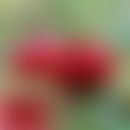Synonym(s)
DefinitionThis section has been translated automatically.
Dried leaves of the walnut tree used phytotherapeutically.
Juglandis folium, walnut leaves, is a drug monographed by Commission E, which is used in herbal medicinal products for the treatment of chronic eczema (see atopic eczema below), mild dermatitis and hyperhidrosis of the hands/feet.
The quality is specified in the German Drug Codex (DAC)
HMPC monograph: Traditional-use: external: Mild skin inflammation, excessive perspiration of the hands and feet
ESCOP: not processed.
Commission E-monograph: Mild superficial inflammation of the skin, excessive perspiration, e.g. of the hands and feet.
Empirical medicine: internally as tea: eczema, as "blood purifier", for gastrointestinal catarrh, rarely as vermifuge, also in cold remedies.
Cosmetics: see Juglans regia leaf extract (INCI)
IngredientsThis section has been translated automatically.
Walnut leaves contain phenolic carboxylic acids such as caffeic acid, gallic acid or salicylic acid, around 10 % tannins ( ellagitannin type), between 3 and 4 % flavonoids, juglone and hydrojuglone.
You might also be interested in
EffectsThis section has been translated automatically.
Walnut leaves have anti-inflammatory, anti-secretional, astringent, antibacterial and antifungal effects. In addition, they soothe itching, cause a slight anaesthetic of surfaces and promote wound healing via the efficacy-determining substance juglone.
Field of application/useThis section has been translated automatically.
Walnut leaves are used for chronic eczema or mild superficial inflammation of the skin.
DosageThis section has been translated automatically.
Walnut leaves can be used in the form of compresses or partial baths with 2 to 3 g of drug per 100 ml. Preparations for internal use are also possible.
Tea infusion for external use: pour 4 to 6 g of walnut leaves with 200 mL of hot water, infuse for 10 min. and strain.
Apply aqueous decoction of walnut leaves in the form of a poultice on the affected skin areas 2 to 4 times a day; remove after 30 min. The aqueous decoction can also be used as a bath additive for full or partial baths;
Undesirable effectsThis section has been translated automatically.
There are no known adverse effects.
ContraindicationThis section has been translated automatically.
Allergy to one of the ingredients, children and adolescents under 18 years of age, pregnancy and lactation when data are insufficient-.
InteractionsThis section has been translated automatically.
No interactions with other medications were found.
Trade namesThis section has been translated automatically.
not a monopreparation, contained as a combination preparation in Imupret® Drg and in some medicinal baths and hair care preparations.
Note(s)This section has been translated automatically.
Dyeing naturally with walnut leaves: For dyeing you can use both the dried walnut leaves and the green, fleshy shells of walnuts. It is important that they are still green. When walnuts are ripe, the shell discolours and loses its colouring properties. The dried leaves or the fleshy shells of the fruits are crushed. The leaves are infused with water in a pot. Per 100 grams of plant parts you need about 500 ml. of water. Boil the leaves for about two hours, then leave the brew to infuse overnight. The next day, the plant parts can be removed using a sieve.
Sun and insect protection with walnut shells: According to H. Schilcher, walnut oil has also proved its worth as sun protection oil or insect protection oil. For this you need 100-200g walnut shells, which are collected in August or September. They are put into 1 l of olive oil and stored in a brown jar with daily shaking. After 1 month, the shells are extracted and the oil is strained off through a gauze strainer. To improve the smell, add a few drops of clove or lemon oil.
LiteratureThis section has been translated automatically.
- Avcı E et al. (2016) Investigation of juglone effects on metastasis and angiogenesis in pancreatic cancer cells. Genes 588:74-78.
- Fang F et al. (2015) Jugloneexerts antitumor effect in ovarian cancer cells. Iran J Basic Med Sci 18:544-548.
- Schilcher H (2015) Plant profiles. In: Guide to phytotherapy. Urban und Fischer Verlag Munich, pp. 332-333
- Wahedi HM et al. (2016) Juglone ameliorates skin wound healing by promoting skin cell migration through Rac1/Cdc42/PAK pathway. Wound Repair Regen 24:786-794.
- Wang J et al. (2016) Antibacterial Activity of Juglone against Staphylococcus aureus: From Apparent to Proteomic. Int J Mol Sci 17(6). doi: 10.3390/ijms17060965.
- Meskelevicius D et al. (2016) Juglone Exerts Cytotoxic, Anti-proliferative and Anti-invasive Effects on Glioblastoma Multiforme in a Cell Culture Model. Anticancer Agents Med Chem.16:1190-1197.
- https://www.ema.europa.eu/en/documents/herbal-monograph/final-community-herbal-monograph-juglans-regia-l-folium_en.pdf
- https://arzneipflanzenlexikon.info/walnuss.php
- Blaschek W (2015) Wichtl-Teedrogens and phytopharmaceuticals. A handbook for practice. Wissenschaftliche Verlagsgesellschaft Munich. S 354-356




